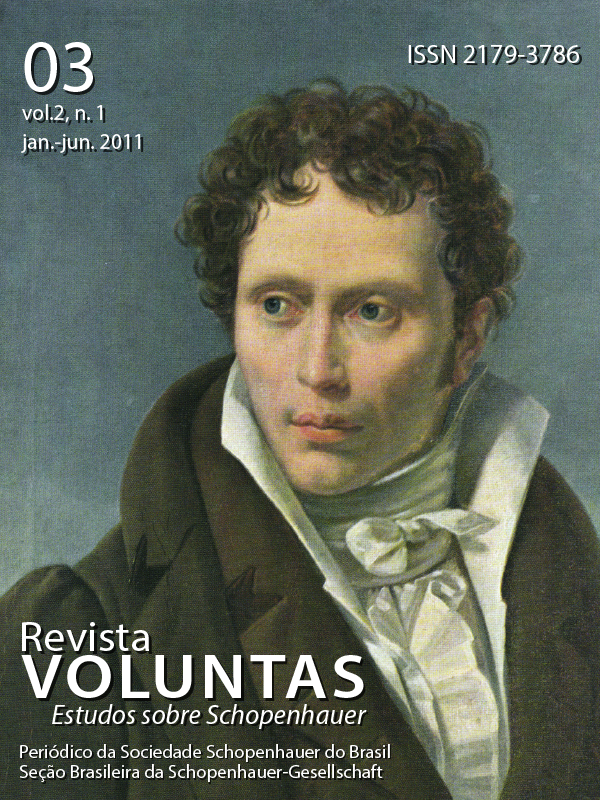Sobre Schopenhauer e as imperfeições do intelecto humano
DOI:
https://doi.org/10.5902/2179378634117Keywords:
Will, intellect, unconscious.Abstract
The human organism (Organismus) is, according to Schopenhauer, a manifestation of the Will and the body (Leib) Will objectified. According to the philosopher, in On the Will in Nature, chapter Comparative Anatomy, “Will is the agent on all internal functions and unconscious, but this organic body is nothing more than the Will objectified." Thus, there is a relationship dependent on the intellect in relation to Will. This appears opposite the psyche as the manifestation of an unconscious wish, and from that, the intellect is defined as a physical thing and conscious, in contrast to Will, which is metaphysical and unconscious. This leads to the imperfections of the intellect that are mentioned in this article.Downloads
References
BRANDÃO, Eduardo. A concepção de matéria na obra de Schopenhauer. São Paulo: Humanitas, 2008.
CACCIOLA, Maria Lúcia Oliveira e Mello. Schopenhauer e a questão do dogmatismo. São Paulo: Editora da USP, 1994.
FREUD, S. Die S Freud-Studienausgabe. S. Fischer Verlag, 1980. Org. , 11 vols., Munique, DTV/ de Gruyter, 2ª ed., 1999.
FREUD, S. Obras Completas de Sigmund Freud (Edição Ballesteros), 3 vol. Madrid: Biblioteca Nueva, 1996.
NIETZSCHE, Friederich. Kritische Studienausgabe. Org. Giorgio Colli e Mazzino Montinari, 15 vols., Munique, DTV/ de Gruyter, 2ª ed., 1999.
SCHOPENHAUER, Arthur. Sämtliche Werke, ed.Wolfgang Frhr. von Löhneysen, Frankfurt, 1986, 5 vols.
SCHOPENHAUER, Arthur. Die Welt als Wille und Vorstellung, Ergänzungen, [O Mundo Como Vontade e Representação: Complementos] – 1844 (2 a. ed.); 1859 (3a. ed).
SCHOPENHAUER, Arthur. Über den Willen in der Natur, Sobre a Vontade na Natureza – 1836.
Downloads
Published
How to Cite
Issue
Section
License
The submission of original manuscripts to this journal implies the transference, by the authors, of the copyrights for printed and digital publication. The copyrights of a published manuscript belong ultimately to the author, and only the copyright for its first publication is reserved to the journal. Authors may only use the same results in other publications explicitly indicating this journal as the medium of the original publication.
Licence
Attribution-NonCommercial-ShareAlike 4.0 International (CC BY-NC-SA 4.0) - This license lets others remix, tweak, and build upon your work non-commercially, as long as they credit you and license their new creations under the identical terms.






